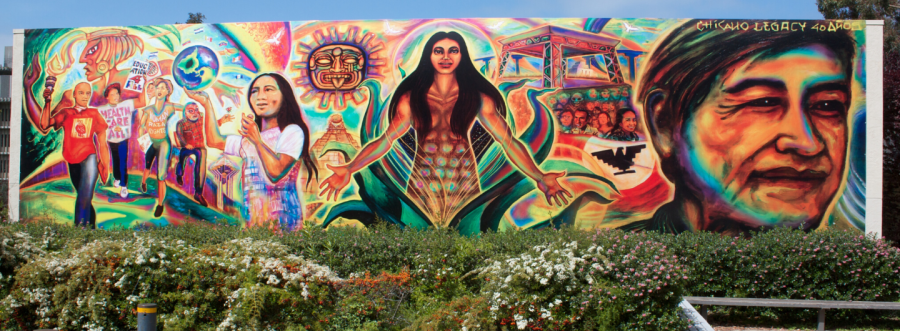UC San Diego is on the path to becoming a Hispanic Serving Institution, joining other UC campuses who are already certified HSIs. UCSD must increase its current undergraduate student population of 20 percent Latinx to 25 percent to receive this certification from the U.S. Department of Education.
Similar to historically Black universities, HSIs serve to provide higher education opportunities to minority groups that often have been underserved at predominantly white institutions.
Receiving this certification makes universities eligible to compete for special grants set aside by the U.S. Department of Education for HSIs. It’s up to certified institutions how they spend these additional funds: they can be used to enable universities to further recruit Hispanic students and provide additional on-campus support or provide specific cultural and language programs catered to Latinx and Hispanic students.
While there is no official list of the number of HSIs given by the Department of Education, U.S. News and World Report recognizes an estimated 400 HSIs. The Southwest region of the U.S. has the highest number of HSIs, in particular California and Texas. Many UC campuses including UC Santa Barbara, UC Irvine, UC Santa Cruz, and UC Riverside, are already certified HSI universities as well as 21 CSU campuses.
UCR, which became the first designated HSI in the UC system in 2008, has previously used its funds from the HSI Stem grants for programs such as their STEM Pathway Program. The program aims to increase the number of Hispanic and low-income students receiving STEM bachelor’s degrees by focusing on student success, outreach and retention efforts.
UCR’s Sequence to Success program which focuses on increasing recruitment and partnership with campus admissions and their six community college partners has also been funded by HSI grants.
There are some criticisms of labeling universities as HSIs. The Department of Education only bases this title off of numbers rather than what programs the institutions offer. Deborah Santiago, the co-founder of Excelencia in Education, an organization dedicated to advancing Latino student success in higher education expressed how the label can be hollow.
“As more and more institutions hit that enrollment threshold, we have to raise the standards and expectations of what it is to be really serving our students,” Santiago said.
HSIs can better serve their students by closing graduation rates between Hispanic and white students while creating programs and events that suit and educate Latinx culture.
Currently, UCSD offers many such programs and courses tailored to Latinx students. The university offers a minor program as well as a Bachelor of Arts in Latin American Studies. The Raza Resource Centro which is one of the Campus Community Centers, focuses on building community on campus by planning events and activities to Latinx students. There are also over 20 student clubs and organizations on campus catered to Latinx students.
However some students feel that these programs and organizations aren’t satisfactory. Earl Warren sophomore Eduardo Vargas expressed his disappointment with UCSD’s approach.
“UCSD has implemented programs for 1st Gen Students, many of which are Hispanic/Lantiné. However, these programs are not directly targeting Hispanic students.” Vargas said. “Other programs like Raza have glorified the image of leaders like César Chavez, who engaged in colorism and spread discriminatory rhetoric towards the undocumented community.”
There is also criticism about UCSD’s focus on Spaniard culture and history rather than Latinx culture.
“Events UCSD has held with a “Hispanic” focus have been so financially inaccessible that they have been primarily attended by European Spanish Americans, the same people whose ancestors disenfranchised the community through centuries of colonization in the first place. Overall, it’s current efforts are misguided and it needs to firmly stand with the community it will actually be serving, not a socially palatable white minority.” Vargas expressed.
With the number of Latinx applicants for the 2021-22 school year rising by 15 percent from the previous year, UCSD may find itself as an HSI sooner than later.
The UCSD Guardian reached out to the Raza Resource Centro for a quote and will update the article with their response.
Photo courtesy of UC San Diego.














